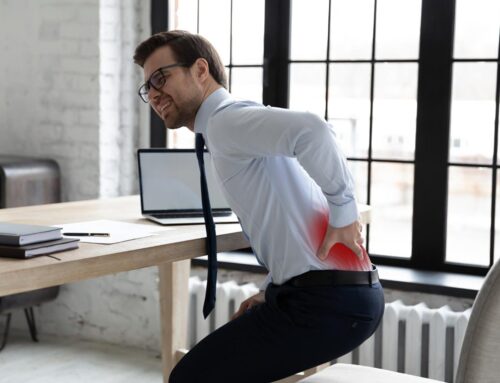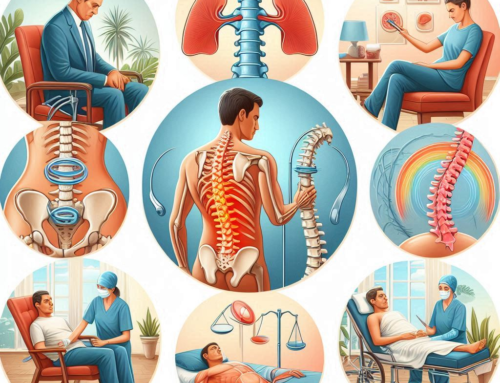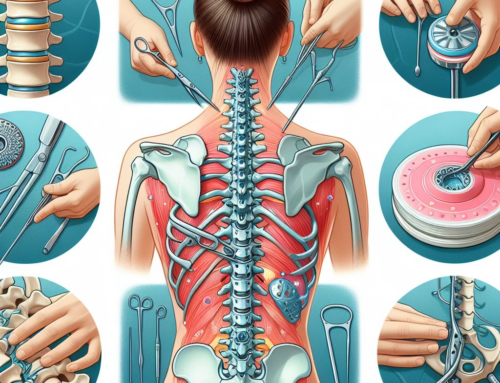Slipped disks, also known as herniated or ruptured disks, can cause debilitating pain and discomfort. However, with advancements in medical technology and treatment methods, finding relief is more accessible than ever. This article explores the latest treatment options for slipped disks, highlighting innovative approaches and effective strategies to alleviate pain and restore function.
Understanding Slipped Disks
What is a Slipped Disk?
A slipped disk occurs when the soft, gel-like center of a spinal disk pushes through a tear in the outer layer. This can put pressure on nearby nerves, causing pain, numbness, and weakness in the back, neck, and limbs.
Also read From Pain to Relief: Effective Treatments for Slipped Disks
Common Causes
- Age-related Degeneration: As we age, our spinal disks lose water content and flexibility, making them more prone to herniation.
- Injury or Trauma: Sudden impact or improper lifting techniques can cause a disk to rupture.
- Genetic Predisposition: A family history of spinal conditions can increase the risk of developing a slipped disk.
- Repetitive Strain: Continuous strain from repetitive movements or poor posture can contribute to disk herniation.
Symptoms of a Slipped Disk
Recognizing the Signs
- Back or Neck Pain: Persistent or intermittent pain in the affected area.
- Radiating Pain: Sharp or burning pain that extends to the arms or legs.
- Numbness or Tingling: Sensations caused by nerve compression.
- Muscle Weakness: Reduced strength in the muscles served by the affected nerves.
Latest Non-Surgical Treatments
Innovative Non-Surgical Approaches
Physical Therapy and Exercise
Physical therapy remains a cornerstone of slipped disk treatment. Advanced exercise programs tailored to strengthen the core and support spinal health can significantly reduce pain and improve mobility.
Manual Therapy
Techniques such as spinal manipulation, massage, and mobilization by trained professionals can help alleviate pain and improve function without the need for surgery.
Epidural Steroid Injections
Corticosteroid injections administered into the epidural space can effectively reduce inflammation and pain, providing relief for several months.
Also read Unraveling the Mysteries of Spinal Treatment: Expert Perspectives
Platelet-Rich Plasma (PRP) Therapy
PRP therapy involves injecting concentrated platelets from the patient’s own blood into the affected area to promote healing and reduce inflammation.
Nerve Blocks
Targeted nerve blocks can provide temporary pain relief by injecting anesthetics and anti-inflammatory medications near the affected nerve.
Surgical Treatment Options
When Surgery is Necessary
Indications for Surgery
Surgery is considered when conservative treatments fail to provide relief or if there is significant nerve compression causing severe pain, weakness, or loss of function.
Advanced Surgical Techniques
Microdiscectomy
Microdiscectomy is a minimally invasive procedure where a small portion of the herniated disk is removed to relieve pressure on the nerve. This surgery has a high success rate and a relatively short recovery time.
Laminectomy
Laminectomy involves removing part of the vertebral bone (lamina) to widen the spinal canal and reduce nerve compression. It is often used in conjunction with other procedures.
Artificial Disk Replacement
This procedure involves replacing the damaged disk with an artificial one to maintain spinal motion. It is an alternative to spinal fusion, preserving more natural movement.
Spinal Fusion
Spinal fusion involves joining two or more vertebrae to stabilize the spine. This procedure is often used when there is severe degeneration or instability.
Also read Building a Stronger Back: Effective Therapies for Spine Conditions
Post-Treatment and Rehabilitation
Recovery and Long-Term Care
Physical Therapy
Post-surgery physical therapy is essential for regaining strength, flexibility, and overall spinal health. Therapists design personalized exercise regimens to aid recovery.
Lifestyle Modifications
- Ergonomics: Using ergonomic furniture and practicing proper posture to reduce spinal strain.
- Healthy Diet: Consuming a balanced diet rich in anti-inflammatory foods to support recovery and overall health.
- Regular Exercise: Engaging in regular low-impact activities such as swimming and walking to maintain spinal health and prevent future issues.
Monitoring and Follow-Up Care
Regular check-ups with healthcare providers ensure proper healing and help address any recurring issues promptly.
Conclusion: Finding Relief from Slipped Disks
Advancements in slipped disk treatment offer hope and relief for those suffering from this painful condition. By combining innovative non-surgical approaches with advanced surgical techniques and comprehensive rehabilitation, patients can achieve significant pain relief and regain their quality of life. Stay informed about the latest treatment options and work closely with healthcare providers to find the most effective solutions for your specific needs.
Note: We are also on WhatsApp, LinkedIn, and telegram, to get the latest news updates, Join our Channels. WhatsApp– Click here, to telegram – Click Here, and for LinkedIn– Click Here.





Get Social